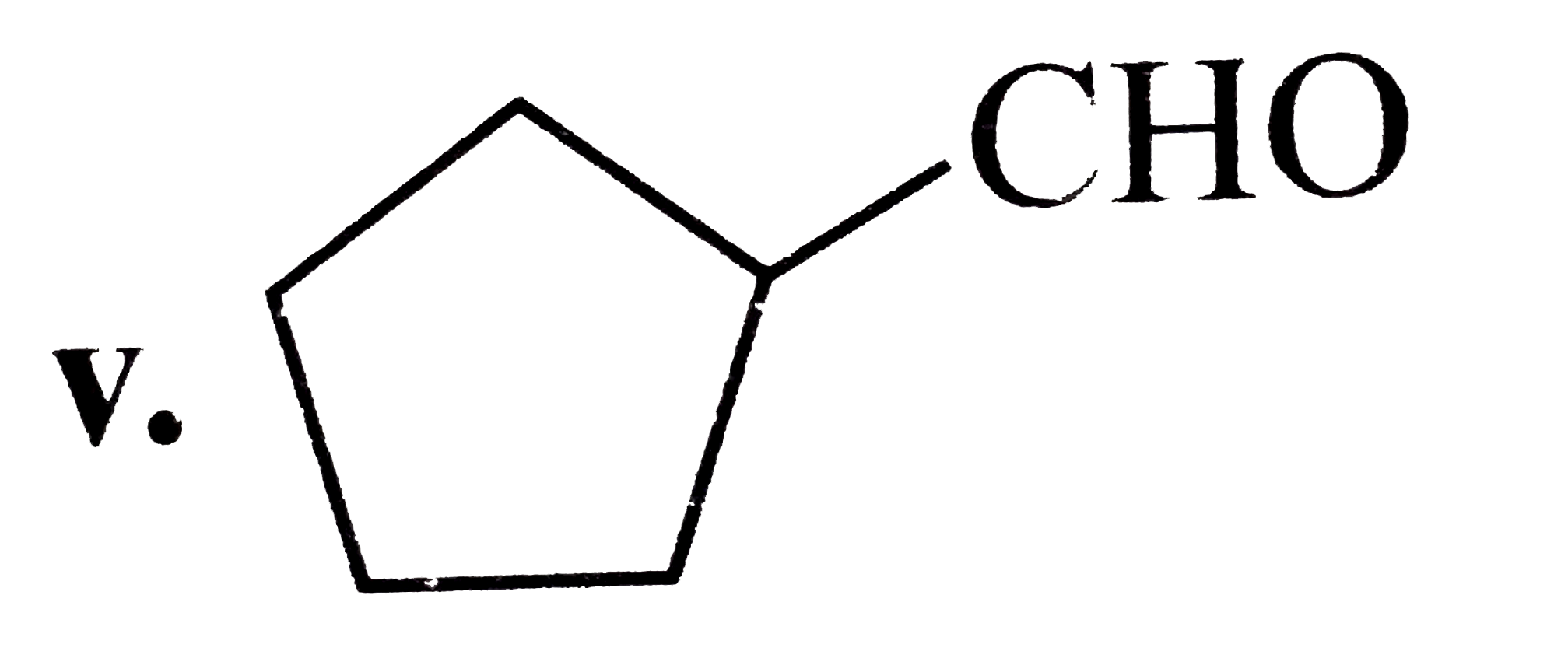Write the IUPAC names of the following ketones and aldehydes. Wherever possible, give also common names.
To determine the IUPAC name and common name of the compound CH3CO(CH2)4CH3, we will follow these steps:
Step 1: Identify the Structure
The given compound can be represented as follows:
- The structure consists of a carbon chain with a ketone functional group. The ketone group is indicated by the carbonyl (C=O) bond.
Step 2: Count the Carbon Atoms
Count the total number of carbon atoms in the longest continuous chain:
- The longest chain includes the carbonyl carbon and the carbon atoms on either side.
- In this case, we have a total of 7 carbon atoms.
Step 3: Determine the Functional Group
Since the compound contains a carbonyl group (C=O) and is located between two carbon chains, it is classified as a ketone.
Step 4: Assign the IUPAC Name
To assign the IUPAC name:
- The longest carbon chain has 7 carbon atoms, which corresponds to "hept".
- The suffix for ketones is "-one".
- Therefore, the IUPAC name is heptan-2-one (the "2" indicates the position of the carbonyl group).
Step 5: Determine the Common Name
For the common name:
- The compound can be named based on the alkyl groups attached to the carbonyl carbon.
- The two groups are a methyl group (from CH3) and a pentyl group (from CH2CH2CH2CH3).
- Thus, the common name is methyl pentyl ketone.
Final Answer
- IUPAC Name: heptan-2-one
- Common Name: methyl pentyl ketone
The given compound can be represented as follows:
- The structure consists of a carbon chain with a ketone functional group. The ketone group is indicated by the carbonyl (C=O) bond.
Count the total number of carbon atoms in the longest continuous chain:
- The longest chain includes the carbonyl carbon and the carbon atoms on either side.
- In this case, we have a total of 7 carbon atoms.
Since the compound contains a carbonyl group (C=O) and is located between two carbon chains, it is classified as a ketone.
To assign the IUPAC name:
- The longest carbon chain has 7 carbon atoms, which corresponds to "hept".
- The suffix for ketones is "-one".
- Therefore, the IUPAC name is heptan-2-one (the "2" indicates the position of the carbonyl group).
For the common name:
- The compound can be named based on the alkyl groups attached to the carbonyl carbon.
- The two groups are a methyl group (from CH3) and a pentyl group (from CH2CH2CH2CH3).
- Thus, the common name is methyl pentyl ketone.
- IUPAC Name: heptan-2-one
- Common Name: methyl pentyl ketone
Topper's Solved these Questions
- BOOK - ICSECHAPTER - ALDEHYDES, KETONES AND CARBOXYLIC ACIDSEXERCISE - ISC EXAMINATION QUESTIONS (PART-II DESCRIPTIVE QUESTIONS) (CARBOXYLIC ACIDS)99videos
ALDEHYDES, KETONES AND CARBOXYLIC ACIDS
- BOOK - ICSECHAPTER - ALCOHOLS, PHENOLS AND ETHERS EXERCISE - ISC EXAMINATION QUESTIONS25videos
ALCOHOLS, PHENOLS AND ETHERS
- BOOK - ICSECHAPTER - APPENDIX II ( TYPICAL CONVERSIONS)EXERCISE - AROMATIC CONVERSIONS98videos
APPENDIX II ( TYPICAL CONVERSIONS)
Similar Questions
Write the IUPAC names of following ketones and aldehydes. Wherever possible, give common nemes also.
i. CH3CO(CH2)4CH3
ii. CH3CH2CHBrCH2CH(CH3)CHO
iii. CH3(CH2)5CHO
iv. Ph−CH=CH−CHO
v.
vi. PhCOPhView SolutionWrite the IUPAC names of the following ketones and aldehydes. Wherever possible, give also common names.
CH3(CH2)5CHOView SolutionWrite the IUPAC names of following ketones and aldehydes. Wherever possible, give common nemes also.
i. CH3CO(CH2)4CH3
ii. CH3CH2CHBrCH2CH(CH3)CHO
iii. CH3(CH2)5CHO
iv. Ph−CH=CH−CHO
v.
vi. PhCOPhView SolutionWrite the IUPAC names of the following ketones and aldehydes. Wherever possible, give also common names.
PhCOPhView SolutionWrite the IUPAC names of the following ketones and aldehydes. Wherever possible, give also common names.
PhCOPhView SolutionWrite the IUPAC names of the following ketones and aldehydes. Wherever possible, give also common names.
PhCOPhView SolutionWrite the IUPAC names of the following ketones and aldehydes. Wherever possible, give also common names.
Ph−CH=CH−CHOView SolutionWrite the IUPAC names of following ketones and aldehydes. Wherever possible, give common nemes also.
i. CH3CO(CH2)4CH3
ii. CH3CH2CHBrCH2CH(CH3)CHO
iii. CH3(CH2)5CHO
iv. Ph−CH=CH−CHO
v.
vi. PhCOPhView SolutionWrite the IUPAC names of the following ketones and aldehydes. Wherever possible, give also common names.
Ph−CH=CH−CHOView SolutionWrite the IUPAC names of following ketones and aldehydes. Wherever possible, give common nemes also.
i. CH3CO(CH2)4CH3
ii. CH3CH2CHBrCH2CH(CH3)CHO
iii. CH3(CH2)5CHO
iv. Ph−CH=CH−CHO
v.
vi. PhCOPhView Solution

